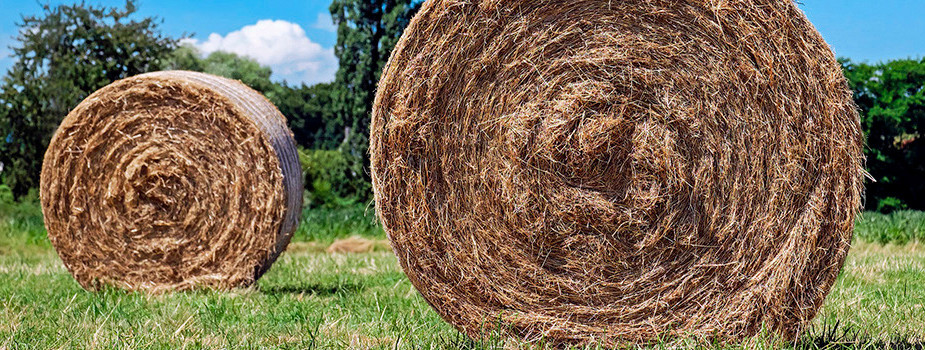Sample Resources
Guidelines
Feed and forage analysis is a vital part of livestock health, growth, and production. The main objectives of this testing program are to improve feed and forage quality and strengthen feeding programs.
- Lab Procedures
- Preparation of Plant Samples for Analysis
- Preparation and Determination of %100 Dry Matter in Feed and Forages
- pH Determination (Silage Only) in Feed and Forages
- Dry Ash Procedure for B & Al
- Dry Ash Procedure for P, K, Ca, Mg, Zn, Cu, Fe
- Wet Ashing Procedure Using HNO3+30%H202 for P, K, Ca, Mg, Zn, Mn, Cu, Fe, S
- Wet Ashing Procedure for P, K, Ca, Mg, Zn, Mn, Cu, Fe, S Using HNO3 and HCLO4
- Total Nitrogen by Combustion
- Kjeldahl Digestion for Total Nitrogen
- Determination of NH4-N by Steam Distillation
- Procedure for Distilling Samples on the Kjeltec 2300 Analyzer Unit
- Standardization of Acids and Bases
- Acid Detergent Fiber Determinations (ADF)
- Determination of ADF-N - Bound Protein
- Neutral Detergent Solution Determination - NDF
- Soluble Protein
- Determination of % Fat (Hexane)
- Determination of % Fat (Ether)
- Determination of Sodium (Na)
- Determination of Nitrate Nitrogen (N03-N) by Specific Ion Electrode
- Determination of % Ash
- Determination of Phosphorous by Colorimetry
- Tubidimetric Determination of Sulfur as Sulfate
- Chloride (Total) Determination
- Chloride (Soluble) Determination
- Washing Glassware
- Sample Storage and Disposal
| Analyses Available | In-State | Out-of-State | Comments |
|---|---|---|---|
| Standard Minerals |
$6 | $12 | Includes phosphorus, potassium, calcium, magnesium, zinc, copper, manganese, iron, and sulfur. Most forages contain adequate Sulfur. However, if they are grown under low Sulfur conditions with high rates of N fertilizer or if urea is added as a feed supplement, the N:S ratio in the ration may be too high (greater than 16:1) for optimum amino acid synthesis. Addition of Sulfur to the ration may be of some value. |
| Ash | $5 | $10 | The percentage residual mineral matter remaining after all organic material is destroyed by heat. Forages contain 3 to 12% ash on a dry weight basis while grains and concentrates contain 1 to 4%. |
| Nitrate Nitrogen | $5 | $10 | Useful for detecting possible toxic levels in forages (greater than 2,000 part per million). |
| Crude Fat (solid samples only) | $5 | $10 | In rations is a concentrated energy source. Calculation of the total digestible nutrients (TDN) and energy takes into account the normal fat content for the forage or grain specified. Therefore, fat analysis is not needed on most forages and grains. However, for complete feed and total mixed rations containing greater than 4% fat, the fat analysis is necessary to determine better estimates for the TDN and energies. |
| Crude Protein | $6 | $12 | |
| Acid Detergent Fiber | $5 | $10 | |
| Neutral Detergent Fiber | $5 | $10 | |
| Bound Protein (solid samples only) | $6 | $12 | Unavailable crude protein which is contained in the fiber fraction of the forage. This value will indicate if excessive heating has occurred, thus reducing protein digestibility. If heat damage is suspected, an analysis for bound protein should be requested. |
| Soluble Protein | $5 | $10 | |
| Soluble Chloride & Sodium | $5 | $10 | |
| Dry Matter Only | $3 | $6 | Dry Matter will be run routinely on all samples at no charge if other analyses are checked. If dry matter is the only test required, the fee for dry matter only is $3.00 in-state and $6 out-of-state. |
| pH | $3 | $6 | |
| Calculated Values | No Charge | No Charge | Total digestible nutrients (TDN) and energy values for hays, silages, mixed rations, grains, and complete feeds will be calculated from the crude protein and acid detergent fiber values. For poultry samples, analyses of crude protein, neutral detergent fiber, fat and ash must be checked for calculation of metabolizable energy. Relative feed value for forages will be calculated from the acid detergent fiber and neutral detergent fiber values. Available crude protein will be calculated from the crude protein and bound protein values. Nonstructural carbohydrates (NSC) will be calculated from the crude protein, neutral detergent fiber, fat, and ash values. |
| Mailed Paper Report | $3 | $3 |
*Cost stated is per sample.
Agricultural Service Laboratory
Copyright © Clemson University
Agricultural Service Laboratory | 171 Old Cherry Road, Clemson, SC 29634

